Eucrites
The Eucrites are named for a Greek word meaning "easily
distinguished". Representing the most common class of achondrites,
more than 100 eucrites are known, excluding all probable pairings.
Although they are easily distinguished from chondrites, they closely
resemble terrestrial basalts. Actually, eucrites are extraterrestrial
basalts, volcanic rocks of magmatic origin, representing the crust of
their parent body, Vesta. They are primarily composed of the calcium-poor
pyroxene, pigeonite, and the calcium-rich plagioclase, anorthite.
Additionally, eucrites often contain accessory minerals such as silica,
chromite, troilite, and nickel-iron metal. Based on mineralogical and
chemical differences, the eucrites have been further divided into three
distinct subgroups: the non-cumulate group, the cumulate
group, and the polymict group.
|
Bereba
Fell June 27, 1924, Upper Volta
TKW 18 kg
Monomict eucrite Highly shocked
|
|
|
|
Bereba 00
Big endcut with shinning fusion crut
168 gr
Price
on request
|
|
|
|
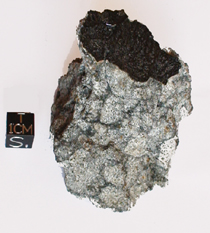  |
|
|
|
|
|
|
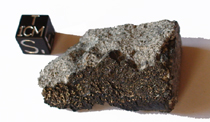 
|
|
|
|
Bereba 01
Nice endcut with shinning fusion crust, a
killer specimen !!
26.62 gr
Price
on request
|
|
|
|
|
|
|
|
Bereba 02
Big slice with shocks veins
25.76 gr
SOLD
|
|
|
|
  |
|
|
|
|
|
|
 
|
|
|
|
Bereba 03
Small slice with shocks veins
0.992 gr
SOLD
|
|
|
|
|
|
|
|
Bereba 04
Small endcut with shocks veins
0.672 gr
$ 120
|
|
|
|
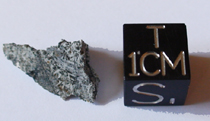  |
|
|
|
|
|
|
 
|
|
|
|
Bereba 05
Small slice with shocks veins
0.670 gr
SOLD
|
|
|
|
Bereba 06
Small slice with shocks veins
0.392 gr
$ 80
|
|
|
|
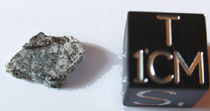
|
|
|
|
|
|
|
 
|
|
|
|
Bereba 07
Small fragment with shocks veins
0.412 gr
$ 80
|
|
|
|
|
|
|
|
Bereba 08
Small fragment with shocks veins
0.444 gr
$ 80
|
|
|
|
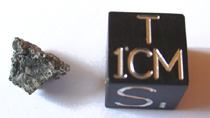 
|
|
|
|
|
|
|
|
|
|
|
|
|
|